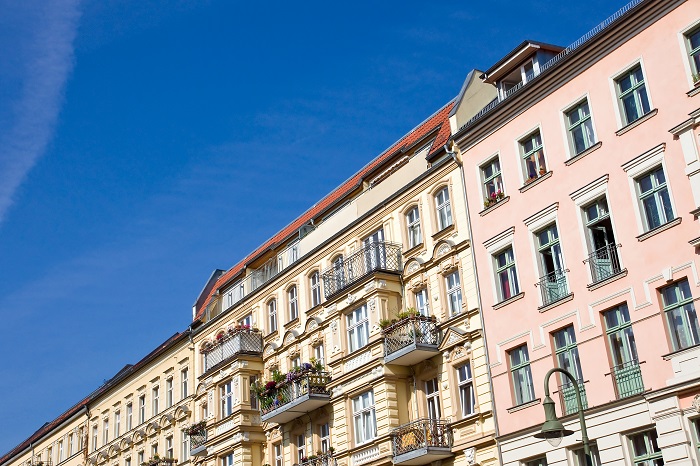In recent years, the price of apartments in the United Kingdom has skyrocketed, making it increasingly difficult for first-time buyers and renters to break into the property market. This conundrum has left many asking just why are UK apartments so expensive? In this article, we will examine the factors behind this dramatic increase in costs, ranging from the cost of land, building permissions, housing demands, construction costs, and external factors.
The Cost of Land
One of the primary factors contributing to the high price of UK apartments is the consistently escalating cost of land. As the demand for residential-use land grows, the limited supply has driven up its value exponentially over time. The scarcity of available land is further worsened by regulations put in place to preserve green spaces, agricultural land, and areas of historic or environmental importance.
Preserving Green Spaces
While preserving green spaces is obviously essential for a multitude of reasons, including health benefits and promoting biodiversity, doing so can unintentionally contribute to the overall impact on housing affordability. Given that large swaths of land are designated as protected parks, forests, and farmland, it becomes more challenging to find suitable areas for residential development projects. This protection of green belt land invisibly increases the prices of the land that can be developed for living spaces.
Building Permissions and Regulations
Apart from the issue of land availability, obtaining building permissions has posed another significant hurdle in developing affordable housing in the UK. Strict planning laws and local authorities’ stringent requirements can significantly delay, if not hinder, the delivery of new homes altogether. Additionally, developers often face obligations to contribute to infrastructure projects or provide affordable housing in the development.
Local Authorities and Planning Laws
Many local authorities actively work to maintain the character of their communities, often objecting to new apartment developments. These rejections can create substantial delays in projects, leading developers to focus on more expensive properties that promise higher return on investment. Furthermore, the planning laws for residential building permissions tend to be complex, slow-moving, and costly, which directly influences the overall price of new apartments.
Housing Demand Outstripping Supply
Another crucial factor in driving up the cost of UK apartments is the ever-growing demand for housing outpacing supply. Factors such as immigration, a growing population, the proliferation of single-person households, and job opportunities in the cities have created an exceedingly high need for new living spaces.
Influx of Investors
A significant factor behind the escalation of UK apartment costs is the influx of foreign investment in the property market. Overseas investors see UK real estate as a secure investment, resulting in a spike in demand for property, particularly in major cities like London. This considerable increase in buyer interest pushes prices higher and makes it more difficult for local residents to enter the housing market.
Construction Costs
Lastly, a vital aspect that cannot be ignored is the role of construction costs in the increased prices of UK apartments. Developments are subject to Value Added Tax (VAT), material costs, labor fees, and additional professional service charges. Many of these elements have seen steady increases due to economic fluctuation and workforce-related factors, thus influencing apartment pricing.
Material & Labor Costs
The continuous rise in raw material prices, including steel and concrete, has been reflected in the rates of new apartments. A weakened pound has made importing materials more costly, as well. Furthermore, a construction workforce that experiences periodic shortages – often attributed to Brexit-related factors and skill gap problems – has seen labor fees trend upwards.
External Factors
Beyond the aforementioned factors, external elements such as interest rates, economic performance, and inflation have impacted property prices across the board. In recent times, low-interest rates seem attractive for potential homeowners, but they encourage increased borrowing which eventually leads to higher property prices. The uncertain political climate further exacerbates these issues, contributing to an even more volatile housing market.
- The cost of land significantly affects the high price of UK apartments due to its limited supply and preservation regulations.
- Building permissions, local authorities, and planning laws: These aspects are responsible for delays in projects and drive developers to focus on more expensive properties.
- Housing demand outstripping supply: Immigration, population growth, single-person households, city job opportunities, and influx of investors contribute to an excessive need for new living spaces, driving up costs.
- Construction costs, including VAT, material expenses, and labor fees: Economic changes and workforce-related factors contribute to their continuous escalation, which influences apartment pricing.
- External factors: Interest rates, economic performance, and inflation affect property prices; additionally, the turbulent political climate furthers market volatility.
In summary, there is no singular reason behind the skyrocketing costs of UK apartments. Rather, a multitude of interconnected aspects – from land scarcity, preservation policies, permission barriers, population growth, investor influx, and growing construction costs – seem to be playing a cumulative role in making it increasingly harder for people to find reasonably priced residential spaces in the United Kingdom.





